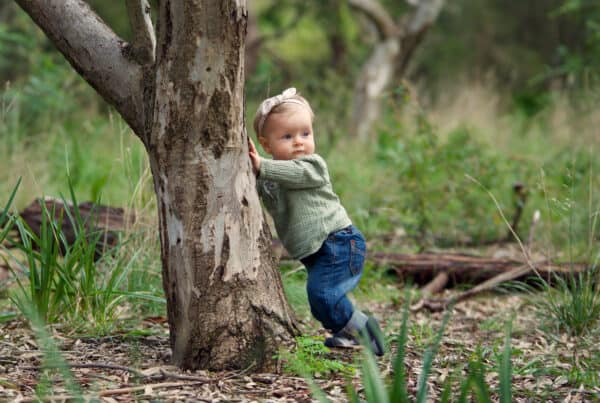Take a moment to reflect on a recent positive experience you have had with one of your children; one where you felt truly connected.
Perhaps it was an instant of joy as they made a new discovery. Maybe it was a flash of laughter as their joke landed perfectly on your funny bone. Or it could have been a tearful or heartfelt embrace, a moment of deep reflection, or a twinkling of peace as you simply sat together and felt… safe.
Brené Brown says connection is “the energy that exists between people when they feel seen, heard and valued.” It feels good to belong. To know that you matter. To feel worthy. But connection is an impermanent state. That beautiful energy between you and your child ebbs and flows. You’ll note that I described an “instant”, a “flash”, a “moment”, and a “twinkling” to describe how true connection occurs. That’s because connection requires intention. Each interaction requires us to re-connect with our children and partners to maintain the experience of being connected. And this explains why parenting – and relationships generally – can be so hard.
The obstacles to maintaining connection are endless, but the effort and attention you give in order to maintain and nurture that connection pays huge dividends for your relationships. Connection is Not a Luxury Item – We Need It! Whether labelled as relatedness, responsiveness, warmth, or nurture – research evidence points to the connection between parent and child as a necessity for our children. It’s not a luxury item. It’s a must-have. Researchers have found children are more curious, more competent, more resourceful, and more likely to initiate behaviour (rather than waiting to be told) when parents are responsive and empathic.
Kids are better at regulating emotions, solving problems, and are more resilient when parents are connected with them. And they act out less. The old-school parenting trope that when our children are behaving in a challenging way, “they’re just doing it for attention” is comprehensively rejected by today’s best science. We now know that children are seeking attention because they need it to be healthy and happy. In fact, it may be less about “attention” and more about “connection”. If your child is seeking attention, give it to them! Seriously. The research shows it matters more than we can possibly know. It’s less that you’re dealing with a challenging child, and more that you’re helping your child deal with a challenge. This re-frame is important. Dr John Gottman calls our children’s choice to reach out to us a “bid for connection”. When we respond to those bids with warmth, acceptance, and engagement, we build life into our relationship with our child.
Key Elements for True Connection
If connection is so important, but also so transient, how can we create and maintain connections?
Intention – On a typical morning, in any typical home, the juggle is real. Our parenting responsibilities compete with our personal to-do list, we search for our child’s missing sports uniform or library book, we check our social media feeds and news headlines, all while the clock is ticking in the background, counting down to that moment we scream, “we’re late… hurry up and get in the car!” We operate on auto-parent. If LOVE is spelled T-I-M-E, what does HURRY UP spell? And are we thinking about this as we interact with our kids?
Our reactions are, at best, a response to unexpected and unforeseen difficulties and at worst, the equivalent of an emotional bomb blast because we aren’t intentional and mindful of what needs to happen to make the morning function well.
Mindfulness, according to Ellen Langer, a Harvard psychologist and researcher, is an active state of mind, characterised by being:
• in the present, rather than 20 minutes in the future
• sensitive to context and perspective, rather than screaming “I don’t care what your sister said to you, you should know better!”
• rule and routine guided, rather than governed by how it “ought to be”
• engaged in the moment-to-moment interactions of the family
Unless we are intentionally and mindfully watching for them – we will miss those instances, flashes, moments, and twinkling’s of connection.
Involvement – When I’m researching for an article or typing out a book chapter, my attention is on my laptop, my books, and my thoughts. My seven-year-old’s best efforts to connect are ineffective when I fail to be involved in her bids for connection. Connection doesn’t exist – until I turn away from what I’m focused on and involve myself in her conversation, her play, her world.
Autonomy Support – Studies show that for us to help children live life fully, we must allow them to make choices. Some of the best connection occurs when we give up our desire for control of our children. For them to make those choices in healthy, safe, wise ways – they need our connection, but not our control. In fact, control may be a reliable disruptor of relationships.
Relinquishing control in a connected way means we:
• consider our child’s perspective (which usually requires connecting through curiosity and questions)
• provide meaningful and helpful choices (where they are not developmentally capable of developing solutions on their own)
• encouraging and supporting our child’s initiative and voice
• minimising our controlling language
• offering meaningful reasons for our behavioural requests.
Ideas for Connection To build stronger connections, consider these ideas:
1. Do what’s important but unspectacular over and over again.
We often get caught up in planning the perfect party, the heavenly holiday, or the exciting event so we can all connect and make memories. This can be a useful strategy, but a focus on consistent small episodes of responsiveness and connection will do more for happiness, wellbeing, and growth.
2. Review the way you use your time and set time aside for connection.
The time that people with lousy relationships spend on Netflix, social media, excessive work, or with other distracted pursuits, people with extraordinary relationships leverage into opportunities to be present, mindful, and connected. Build your catalogue of connection experiences, not your catalogue of movies to watch on your streaming service. Set aside time to spend together, and consider the quality of the activities and interaction during this time. Also consider establishing positive routines and rituals in your home like family dinners gathered around the table, with an opportunity to discuss each other’s days, or family game nights to increase the opportunities to reconnect daily.
3. Allow your worlds to cross-over.
Our children are desperate to enter our world and connect with us. Even more, they crave the opportunity to bring us into their world and share their experience of life with us. Let your children know that you are interested in what they’re interested in, and pay attention to their lives. Seek ways to communicate; learning their communication style, trying to speak their ‘language’ or at least understanding it and listening will help bridge any gaps.
The True Meaning of Connection
Strangely, while we study connection, calling it by so many names, the one thing I’ve not seen it called in science is the one thing we most need to call it: love. It is love – or loving connection – that draws us to others because it is the truest way we can feel seen, heard, and valued. If every interaction comes from a place of love, positive connection will follow.





